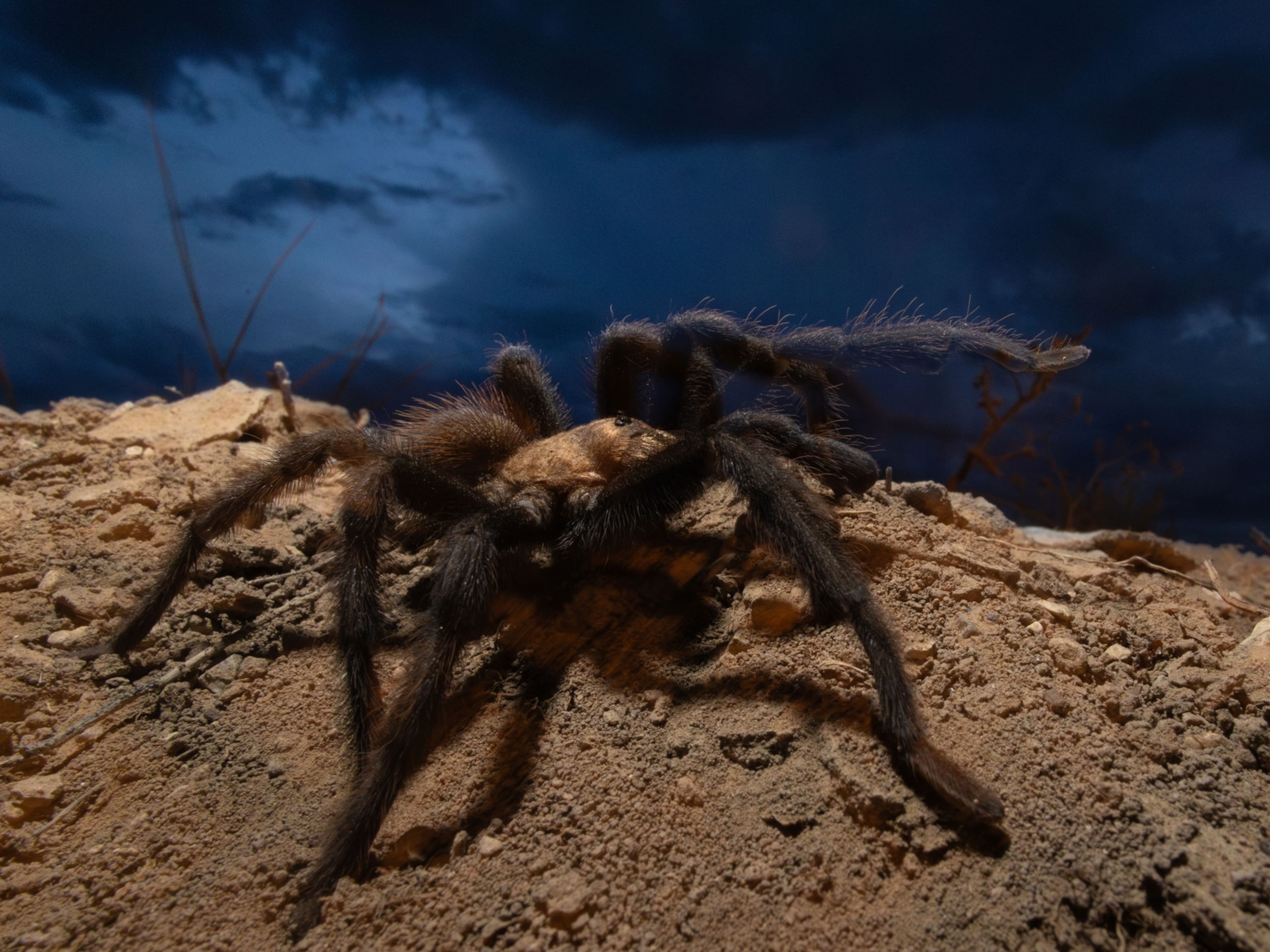
Science Still Can't Explain Why These Tarantulas Are Blue
The spiders’ brilliant colors are the work of a still-mysterious evolutionary force.
Some tarantulas are bigger than your face. Others defend themselves by launching streams of excrement. Some are stunningly beautiful—and bright blue.
Recently, a team of researchers set out to solve one of nature’s little mysteries and determine why, exactly, some tarantulas are such a vibrant hue.
“We didn’t find the answer to that question,” says the University of Akron’s Bor-Kai Hsiung, spoiling the punchline.
Many tarantulas are quite colorful, and it’s not uncommon for the spiders to wear blue. Poecilotheria metallica, a critically endangered species, is covered in an intricate geometric blue pattern; the burrow-building cobalt blue tarantula (Haplopelma lividum) is a slightly lighter hue, while the Singapore blue (Lampropelma violaceopes)—a large, aggressive tree-dweller—has eight dark blue legs arrayed around a golden body.
In fact, as Hsiung and his colleagues reported today in Science Advances, blue coloration probably evolved independently at least eight times in tarantulas, which are among the most ancient of spiders. What’s more, by taking a close look at blue hairs from eight different tarantulas, the team found that the spiders don't all create the blue color in the same way, meaning the color isn’t simply hitching a ride with a different trait that offers the spiders an advantage.
In other words, scientists suspect there’s a good reason the spiders are blue.
“The blue color definitely has a major function, and it’s very specific why they need this color,” Hsiung says. “We just don’t know what that function is yet.”
Unlike the pigments that make plant leaves green and flamingos pink, a tarantula’s blue color comes from precisely arranged nanocrystals. The crystalline array acts like a mirror that reflects only a particular wavelength of incoming light. In some tarantulas, that wavelength happens to be the same shade of blue. These light-reflecting arrays are also responsible for the shimmering colors of beetles, butterfly wings, and bird feathers; the colors they reflect depend on the alignment and spacing between individual crystals.
It’s a system that’s easy to tweak, and can rapidly evolve. That’s why scientists suspect sexual selection—or choosing mates based on courtship displays and other physical factors—is primarily responsible for flashy, structure-based colors.
But, Hsiung and his colleagues argue, that hypothesis falls apart when one considers the lowly tarantula—a creature that, despite having eight eyes, can’t see very well (birds and butterflies, on the other hand, are known to have excellent eyesight). That means it’s unlikely the blue hue evolved because spiders prefer an eight-legged lover colored like the sea.

Instead, these new observations suggest some other evolutionary force is at work, Hsiung says. Just what that force is, though, is still a mystery. Hsiung suspects the color is some kind of signal, but it’s not clear who it’s for or whether the message is “come here” or “don’t eat me.”
But Vinod Saranathan, who studies the physics and evolution of structural colors at Yale-NUS College in Singapore, isn’t quite ready to accept that sexual selection hasn’t played a role in creating these blue-hued beauties, noting that in some tarantula species, males and females are colored differently. Perhaps, he says, mate preferences drove the development of colors early on, and the colors no longer offer the spiders any particular advantages.
Hsiung says that while some male and female tarantulas do differ in color, the placement of the blue hue—and the fact that it’s not always present in adults of reproductive age—isn’t always what you’d expect for a trait that helps spiders make more spiders.
And so, as this week of giving thanks wraps up, we’d like to take a moment and offer a word of gratitude for whatever it is that makes tarantulas blue.
Follow Nadia Drake on Twitter.





